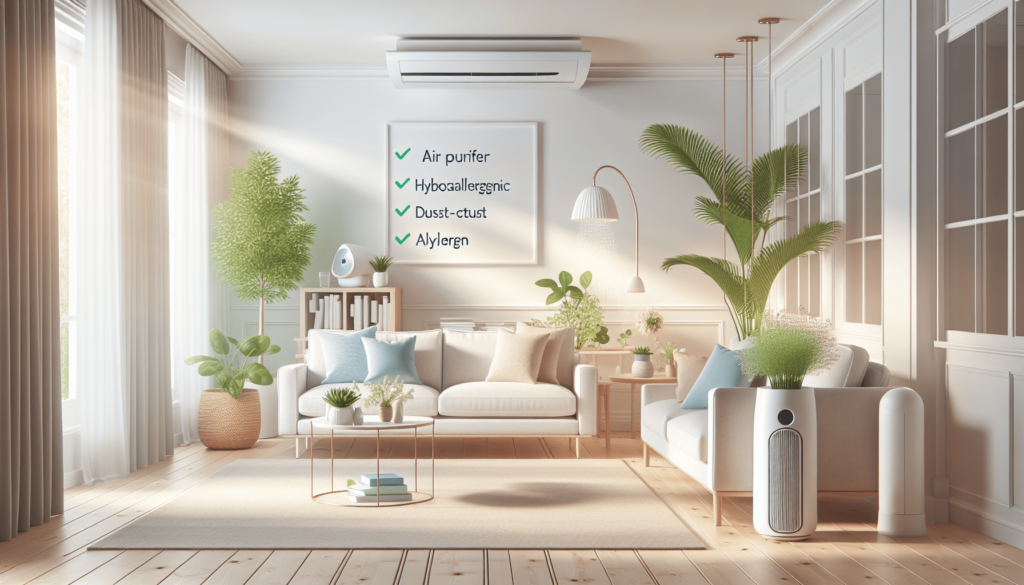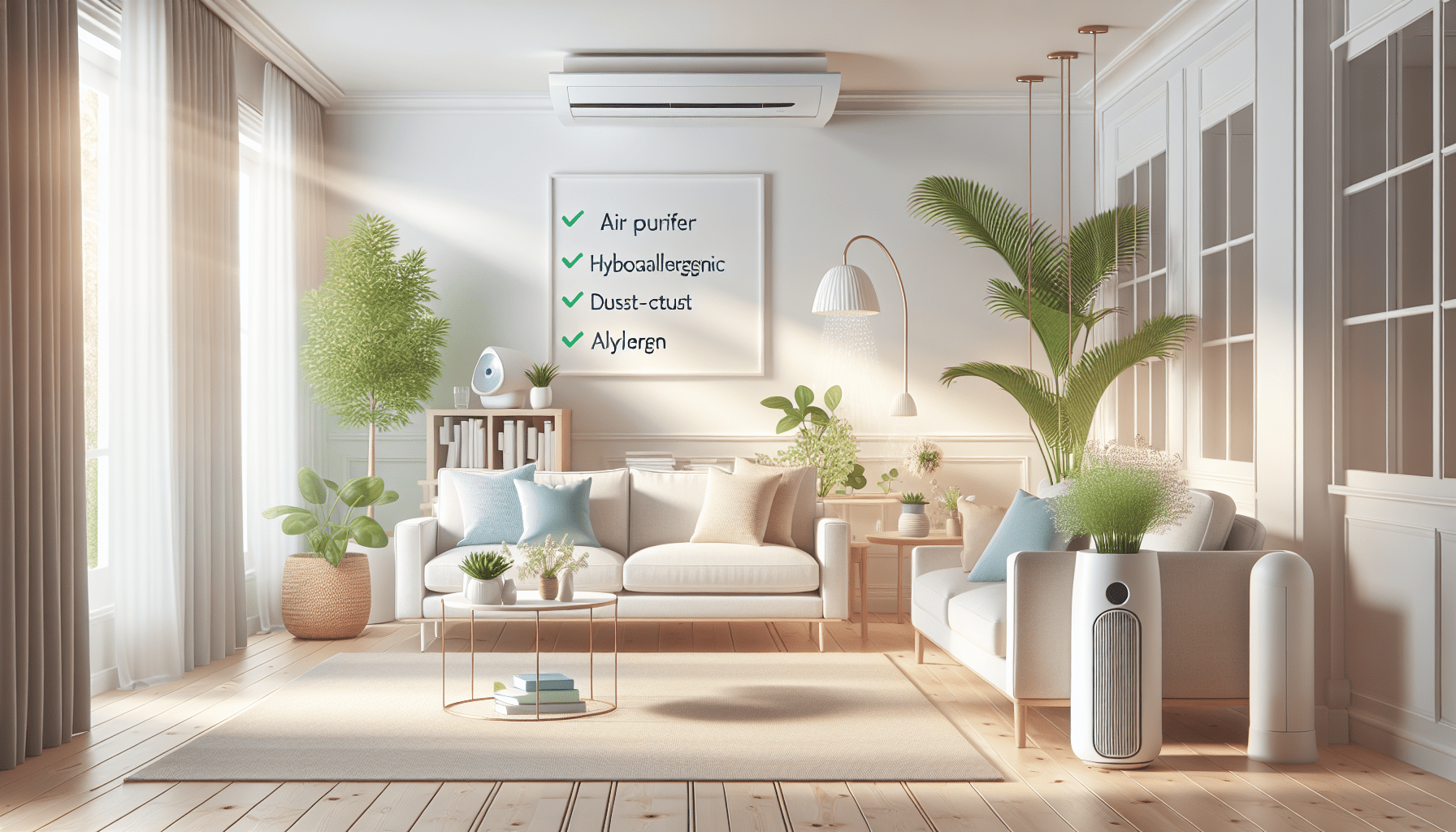Allergy-proofing your living space can make a world of difference in your comfort and well-being, but it’s easy to overlook some common pitfalls. In “10 Common Mistakes to Avoid When Allergy-Proofing Your Living Space,” you’ll discover how to sidestep these errors and create a truly allergy-friendly environment. From overloading on chemical cleaners to neglecting your HVAC system, understanding these frequent mistakes will help you breathe easier and live healthier. Have you ever wondered why your allergies persist despite all the efforts to clean and allergy-proof your living space? If so, you’re not alone. Many find that their allergy symptoms do not diminish, even after taking steps to make their homes allergen-free. Sometimes, it’s not about what you do, but how you do it.
Let’s dive into some of the most common mistakes people make when trying to allergy-proof their homes.
10 Common Mistakes to Avoid When Allergy-Proofing Your Living Space
1. Overlooking Your HVAC System
Your HVAC system can be a significant source of allergens, spreading them throughout your home. You might be diligent about cleaning your surfaces, but if your HVAC system is polluted, you’re likely missing a substantial problem area.
Importance of Regular Maintenance
Your HVAC system needs regular maintenance and cleaning. Changing filters regularly and ensuring ducts are free from dust can prevent the spread of allergens.
Upgrading to High-Efficiency Filters
Consider using high-efficiency particulate air (HEPA) filters. These can trap more significant amounts of dust, pollen, and other allergens, making a huge difference in your air quality.
2. Neglecting Regular Vacuuming
Vacuuming is essential for keeping allergens at bay, but doing it wrong can spread more allergens into the air.
Choosing the Right Vacuum
Invest in a vacuum cleaner equipped with a HEPA filter. This ensures that the vacuum captures allergens rather than redistributing them through the air.
Vacuuming Frequency
Vacuuming once a week may not be sufficient, especially in high-traffic areas. Aim for at least twice a week, and don’t forget less obvious areas like beneath furniture.

3. Overlooking Window Treatment
Your curtains and blinds can trap dust and pollen, significantly affecting the air quality in your home.
Proper Cleaning Methods
Regularly wash your curtains and clean your blinds. Choosing blinds over heavy drapes can also reduce the amount of fabric that traps allergens.
Material Selection
Opt for materials less likely to attract dust, such as synthetic or easy-to-clean options.
4. Ignoring Mold and Moisture Control
Mold thrives in damp environments and can be a significant allergen.
Identifying Problem Areas
Common places where mold can grow include bathrooms, basements, and around windows.
Regular Checks and Cleaning
Inspect these areas regularly and use mold-killing solutions as needed. Consider using a dehumidifier to keep humidity levels below 50%.

5. Using the Wrong Cleaning Products
Some cleaning products can contain harsh chemicals that may trigger allergy symptoms rather than alleviate them.
Natural Alternatives
Look for natural or hypoallergenic cleaning products. Ingredients like vinegar, baking soda, and lemon can be effective and less likely to cause allergic reactions.
Avoiding Fragrances
Fragranced cleaning products can be a trigger for many. Opt for fragrance-free or products labeled for sensitive skin.
6. Pet Dander: A Common Overlook
Pet dander is a significant allergen, but the love for our furry friends often blinds us to the severity of this issue.
Regular Grooming
Make sure to groom your pets regularly. Weekly baths and daily brushings can help minimize dander in your home.
Creating Pet-Free Zones
Designate some rooms, particularly bedrooms, as pet-free zones. This helps ensure you have a place to retreat that is relatively dander-free.
7. Infrequently Washed Bedding
Your bed can accumulate a significant amount of allergens, from dust mites to pet dander.
Washing Schedule
Wash your bed linens in hot water weekly. This kills dust mites and helps remove other allergens like pollen and dander.
Allergy-Proof Covers
Using allergen-proof covers for your mattresses and pillows can create an effective barrier against allergens.
8. Not Using an Air Purifier
Air purifiers can substantially improve the air quality in your home, but many neglect to use them.
Choosing the Right Air Purifier
Select an air purifier that includes a HEPA filter. Ensure it’s suitable for the size of the room where it will be used for maximum efficiency.
Regular Maintenance
Remember to change the filters as recommended by the manufacturer. A clogged filter won’t do its job correctly.
9. Not Paying Attention to Floor Coverings
Carpets can be havens for dust mites, pollen, and other allergens.
Opting for Hard Floors
If possible, replace carpets with hard flooring options like wood, laminate, or tile. These are easier to keep clean and do not trap allergens as carpets do.
Regular Cleaning
If replacing carpets isn’t feasible, be diligent about cleaning them. Deep cleaning carpets periodically can help manage allergen levels.
10. Wearing Outdoor Shoes Inside
Shoes can bring in pollen, dust, and various irritants from outside.
Indoor Shoes
Consider having a no-shoe policy inside your home. Provide indoor slippers or shoes to wear inside the house.
Entryway Cleanliness
Keep entryways clean and have mats outside and inside the doors to help reduce the amount of allergens tracked into your home.
| Mistake | Solution |
|---|---|
| Overlooking Your HVAC System | Regular maintenance, use HEPA filters |
| Neglecting Regular Vacuuming | Use a vacuum with HEPA filter, vacuum multiple times a week |
| Overlooking Window Treatment | Regularly wash curtains, clean blinds, choose synthetic fabrics |
| Ignoring Mold and Moisture Control | Inspect damp areas, use mold-killing solutions, dehumidify |
| Using the Wrong Cleaning Products | Use natural or hypoallergenic cleaners, avoid fragrances |
| Pet Dander: A Common Overlook | Groom pets regularly, create pet-free zones |
| Infrequently Washed Bedding | Wash linens weekly in hot water, use allergen-proof covers |
| Not Using an Air Purifier | Use a HEPA air purifier, maintain it regularly |
| Not Paying Attention to Floor Coverings | Opt for hard floors, deep clean carpets regularly |
| Wearing Outdoor Shoes Inside | Have a no-shoe policy, keep entryways clean |
Avoiding these common mistakes can make a substantial difference in your journey to allergy-proof your living space. By taking proper measures to address each of these areas, you’ll create a healthier, more comfortable environment for yourself and your family. Feel free to adapt these tips to best suit your lifestyle and home.
Now, breathe easy and enjoy your improved living space!
